Brazil. Part I. Foz do Iguaçu—São PauloMap
January My travel around Brazil took place in the southern part of the country, where the main cities are, not the Amazon, primitive tribes, or jungles. Brazil turned out to be a surprisingly developed, mature, and peaceful country. Brazil most resembles the US: similar concepts of urban development, road signs, a love for large volumes of informational text. I was especially struck by the fact that practically all the cities here are alike and equally dull, exactly like in the States. Brazilians are completely calm and composed in both appearance and behavior. Yet the sound of music or drums is capable of literally transforming people in an instant. As soon as the music ends, everyone returns to their normal pace of life. Although my story follows in chronological order and is broken down by city, the vast majority of the details aren’t tied to any particular location—they can be encountered everywhere. 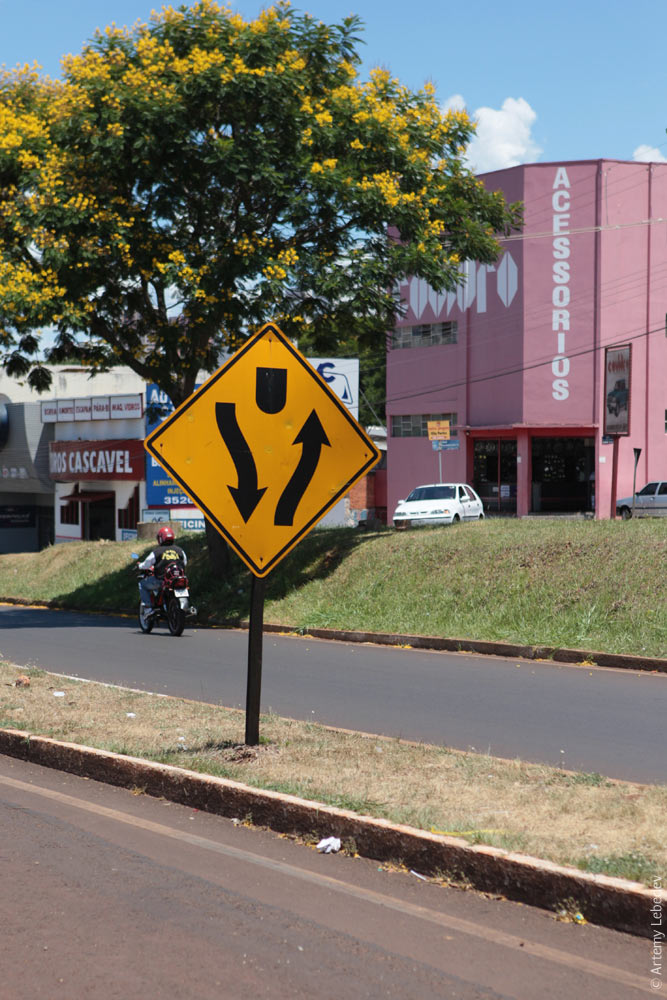 Foz do IguaçuMapThe city is located at the meeting point of three countries—Brazil, Paraguay, and Argentina. This is also the site of Iguaçu Falls, a major tourist attraction which draws giant crowds.  And where there are waterfalls, there’s inevitably a hydro power plant (compare with the report about Niagara Falls). Tourists are greeted by a young man and woman wearing a transformer and transmission tower on their heads. 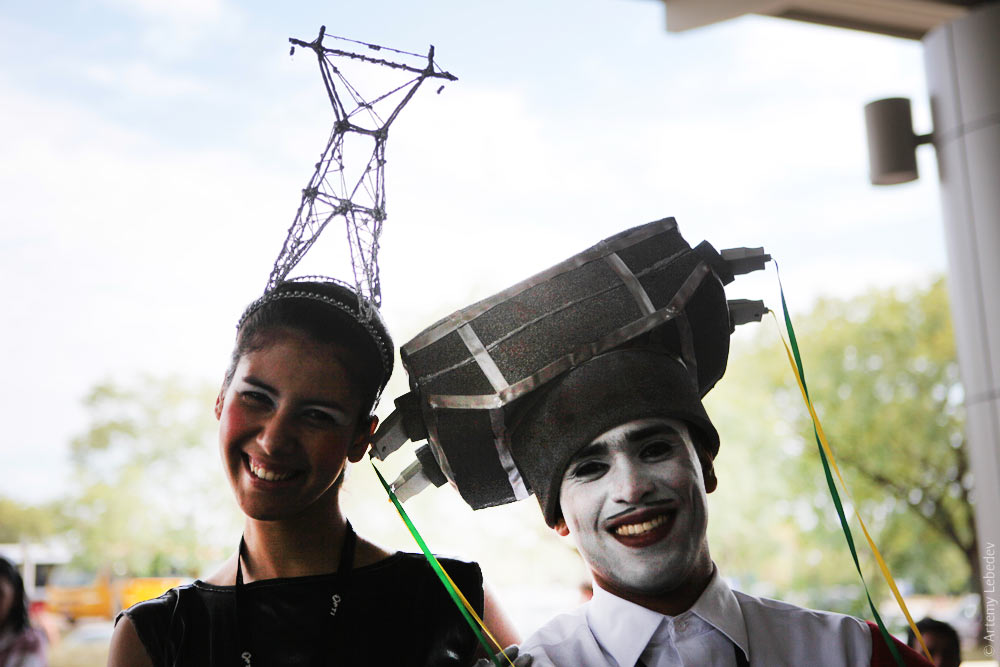 Traffic lights with a unique system can be found in this part of the country. They have two columns of six lights each on the edges and one yellow light at the bottom in the center. The red signal consists of two lights: the one on the bottom is continuously lit, the second one slowly moves down from the top, like a falling shape in a Tetris game. Once it reaches the bottom, the yellow signal lights up for a moment. 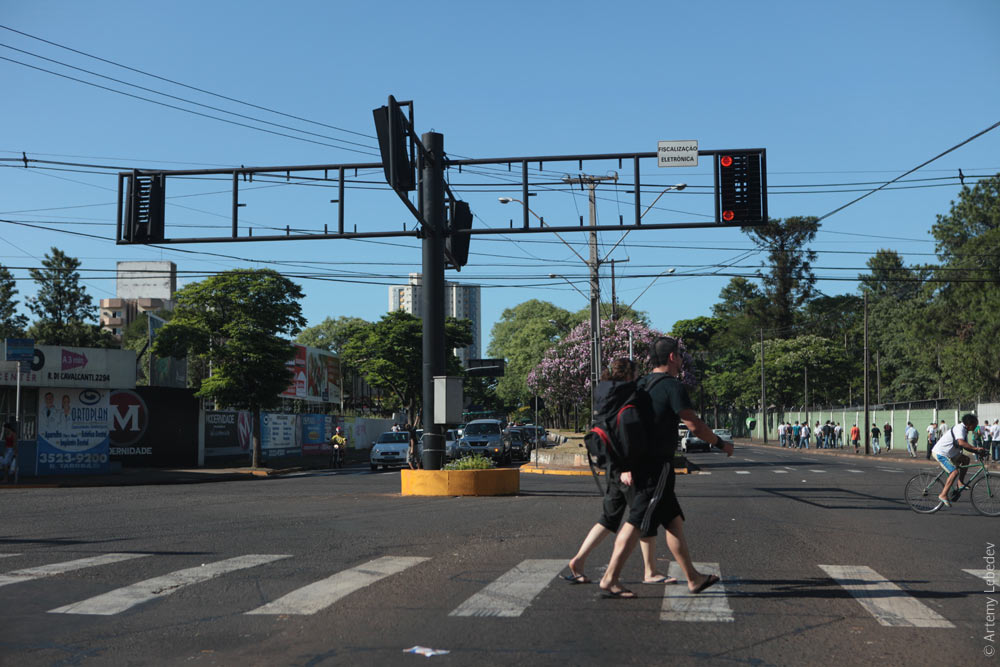 Then the green light starts counting down time in the same way. 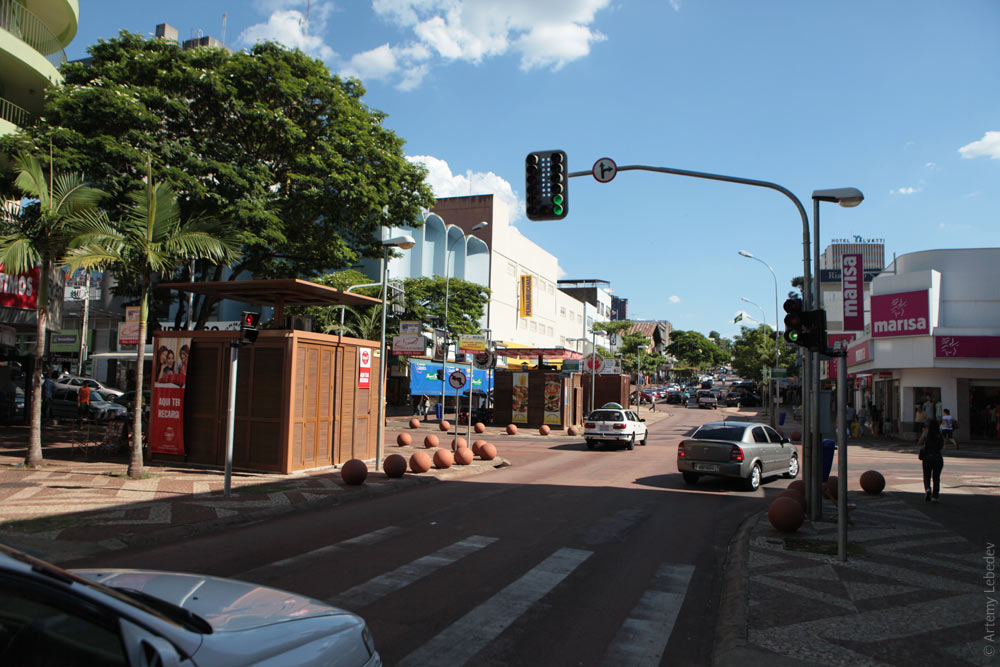 There’s a pedestrian crossing up ahead. Once again, the adult is holding the youth by the elbow. This standard has spread to all the neighboring countries. 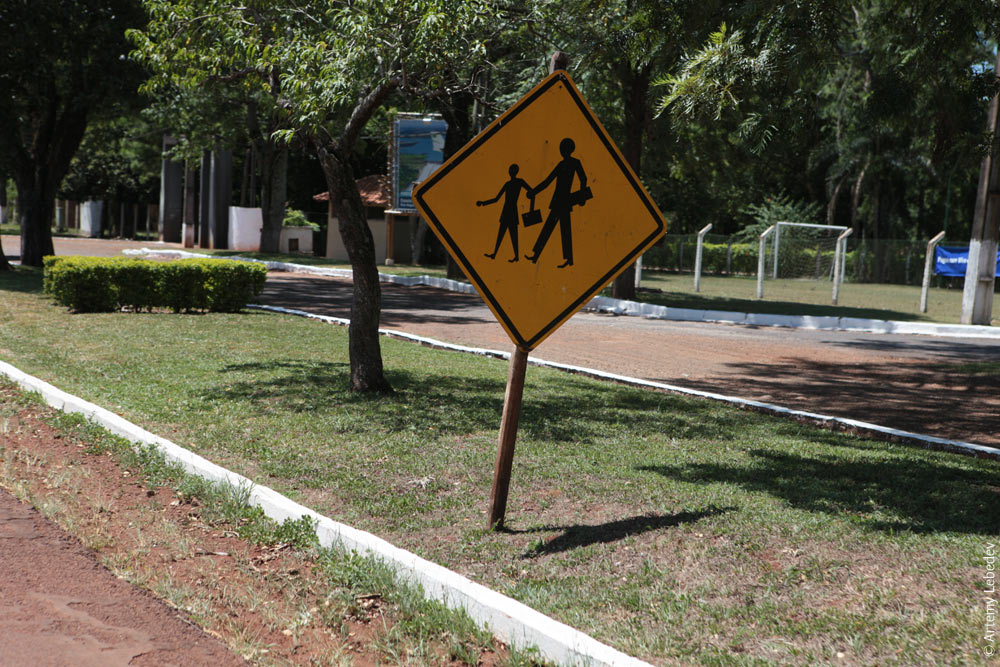 Animal power is used to move garbage here as well. 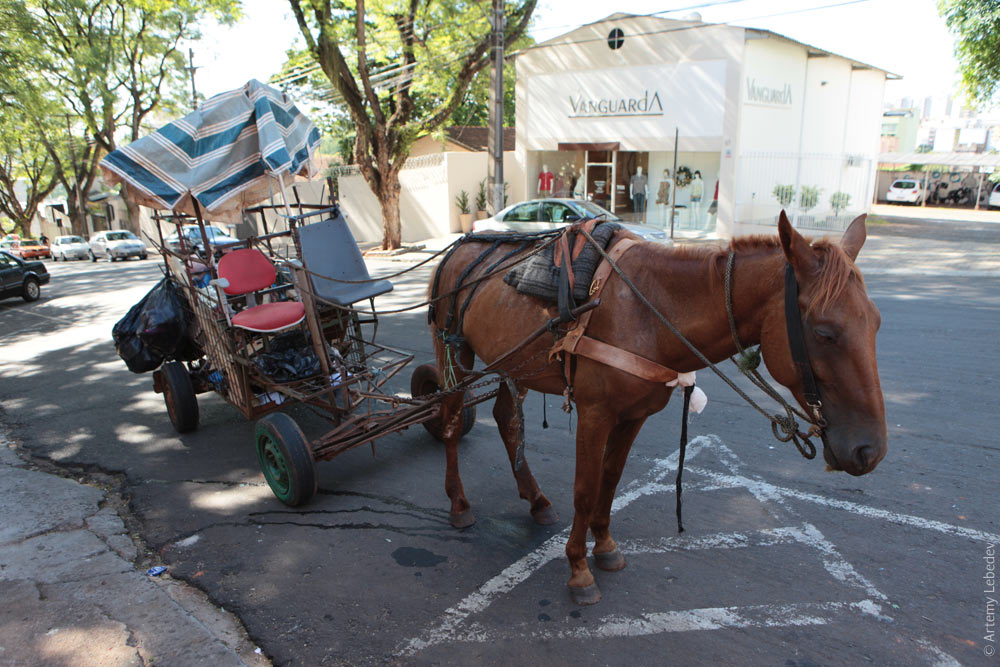 By the way, every co-op has to incorporate two fir trees in its logo (this move was borrowed from Brazil by Paraguay). 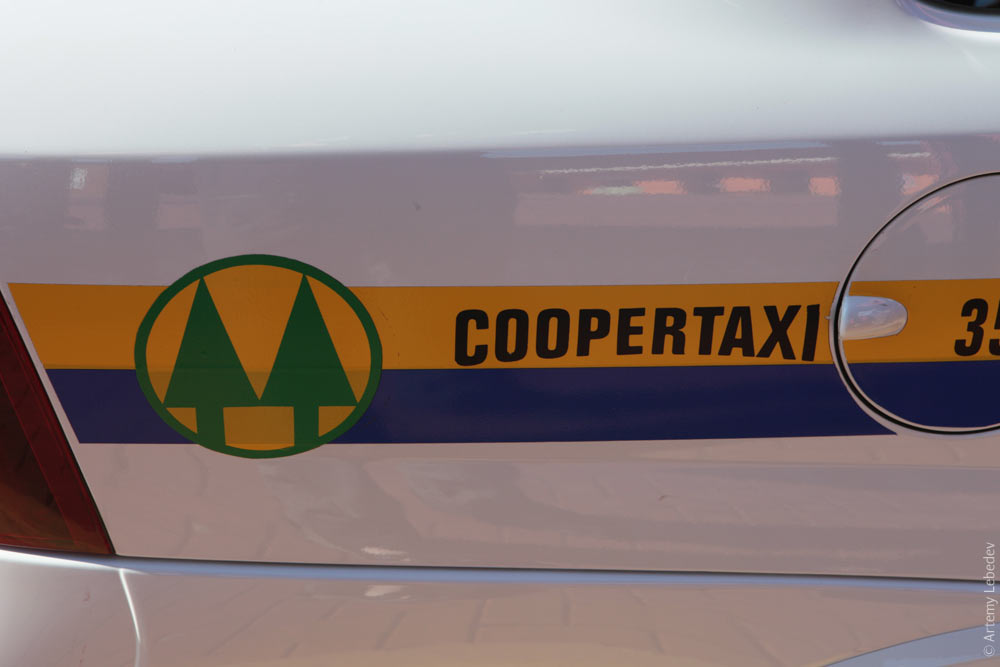 Two methods of crime prevention are used here. One: criminals are asked not to show up. 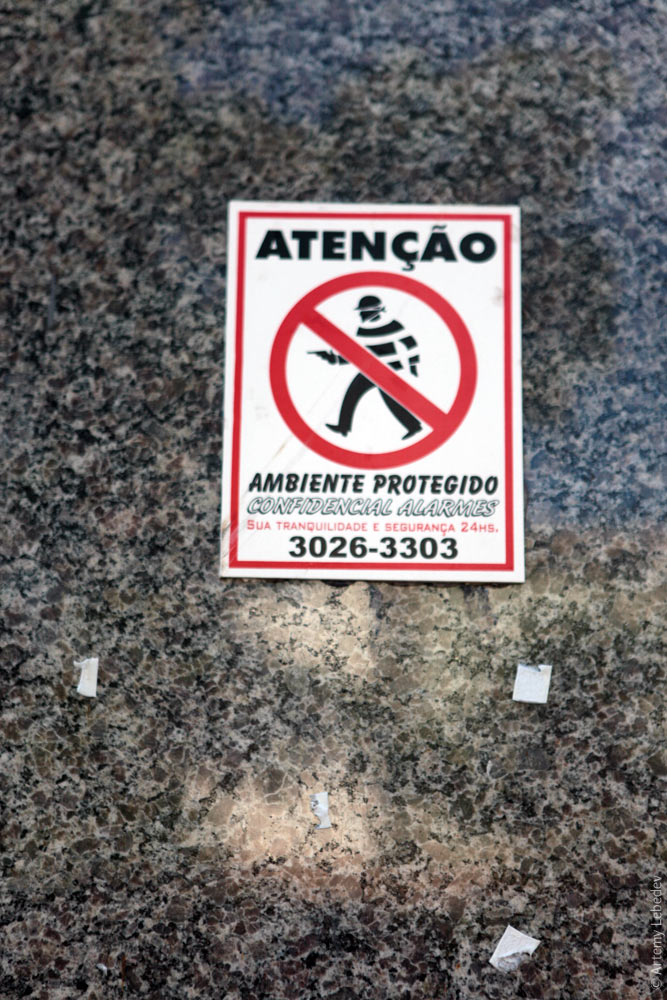 Two: they’re threatened with strict and tough policemen. 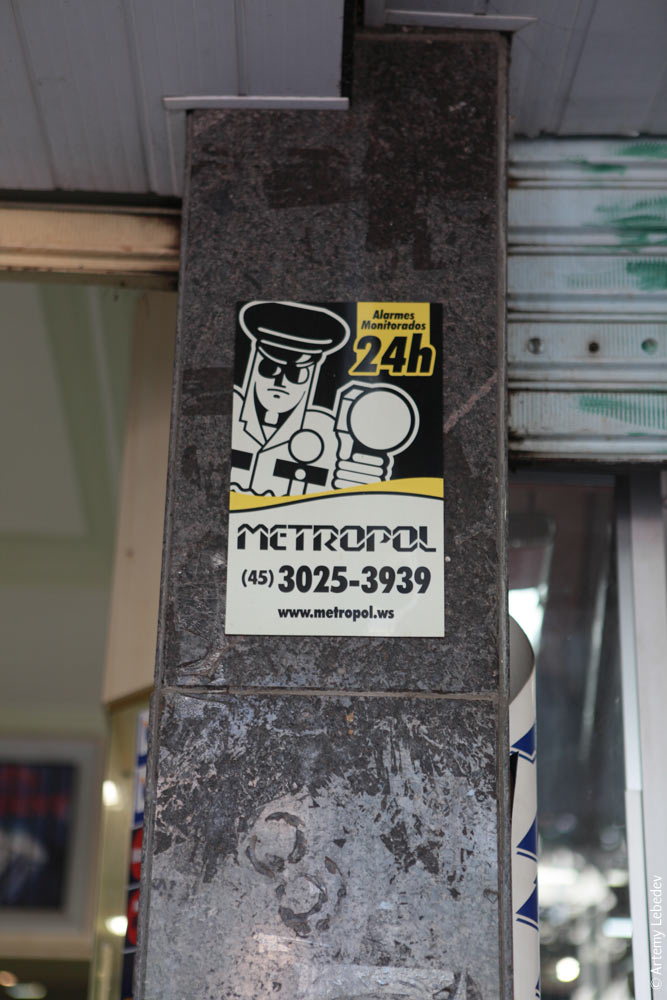 I never would have thought I’d get a chance to expand my collection of idiotic dental illustrations here. Floss Boy and Tooth Girl—how touching. 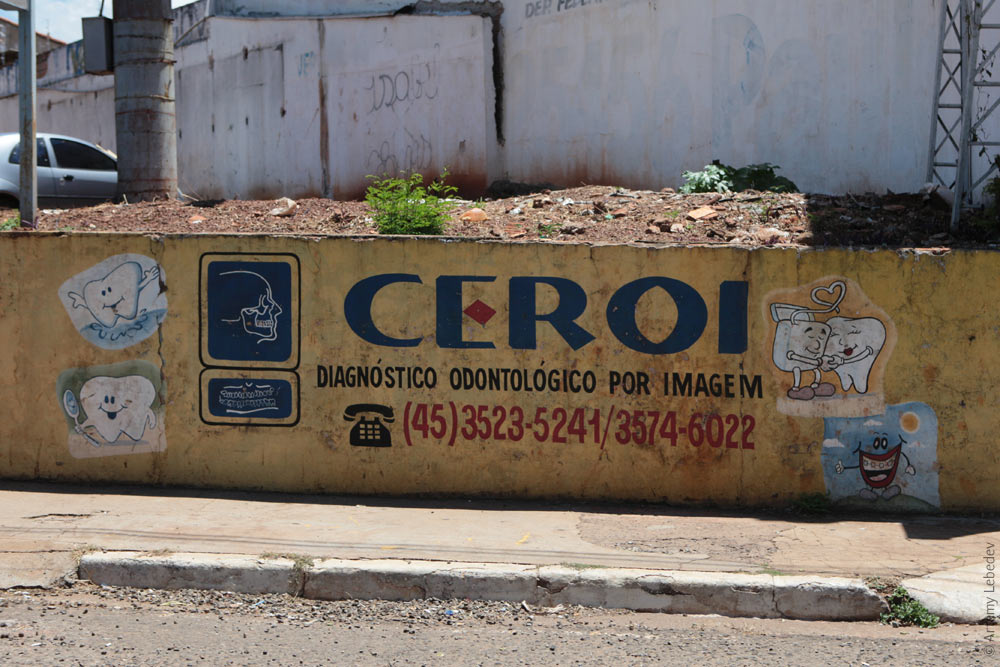 All the phone booths are the same. There’s a slightly older and slightly newer model (the photo shows the newer one). The only variation across cities is the color and phone company’s logo. The local garbage and recycling bins are interesting. 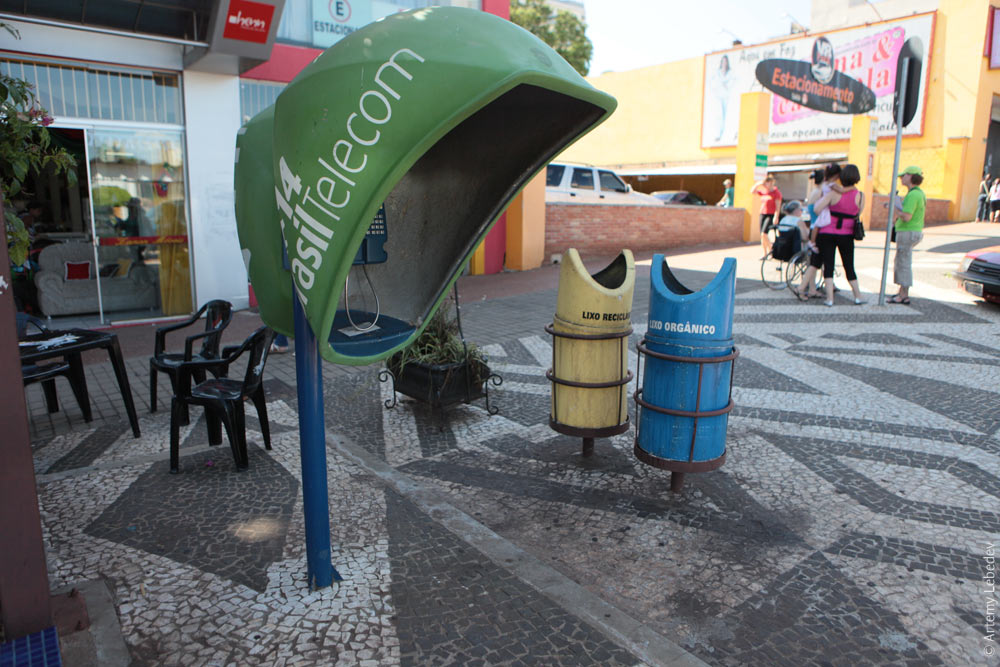 The similarities with the US are sometimes striking: half the billboards there are also held up by wood struts. 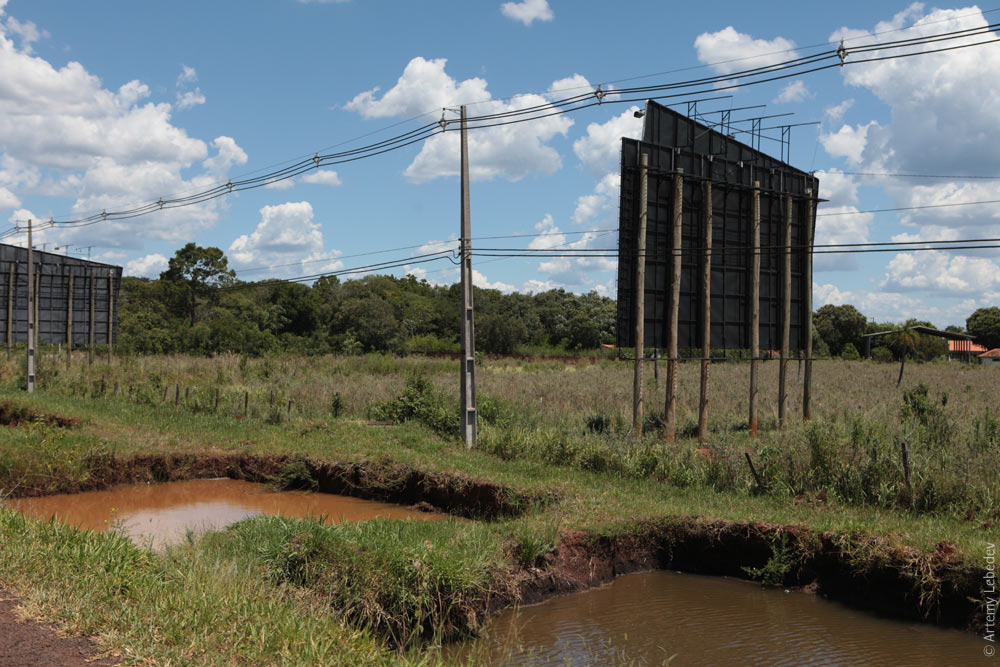 Brazilian license plates specify the city of registration. The rear plate always has a seal attached; the front one doesn’t for some reason. 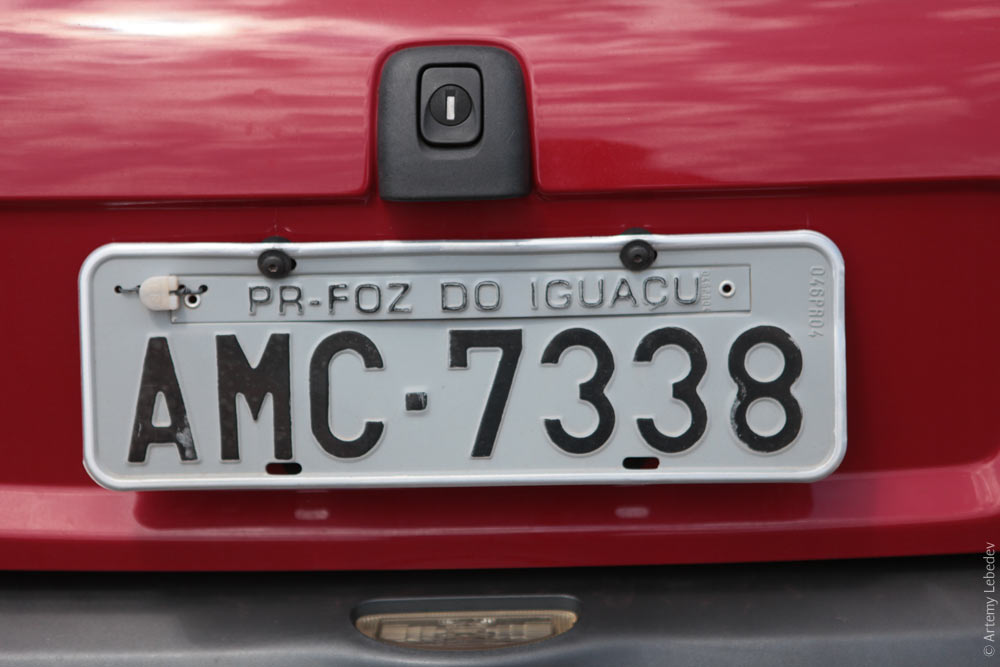 Here I boarded a plane and flew to São Paulo. São PauloMap
This view alone is sufficient to realize: Brazil is more developed than Russia. 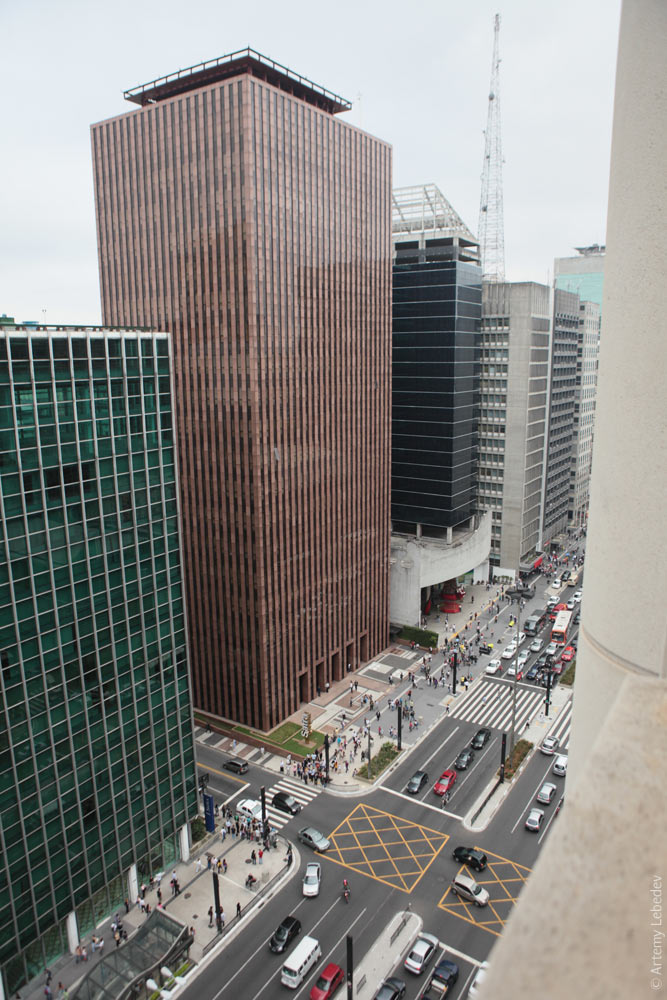 São Paulo is like the Frankfurt or Charlotte of Brazil, only livelier. The city occupies multiple levels. 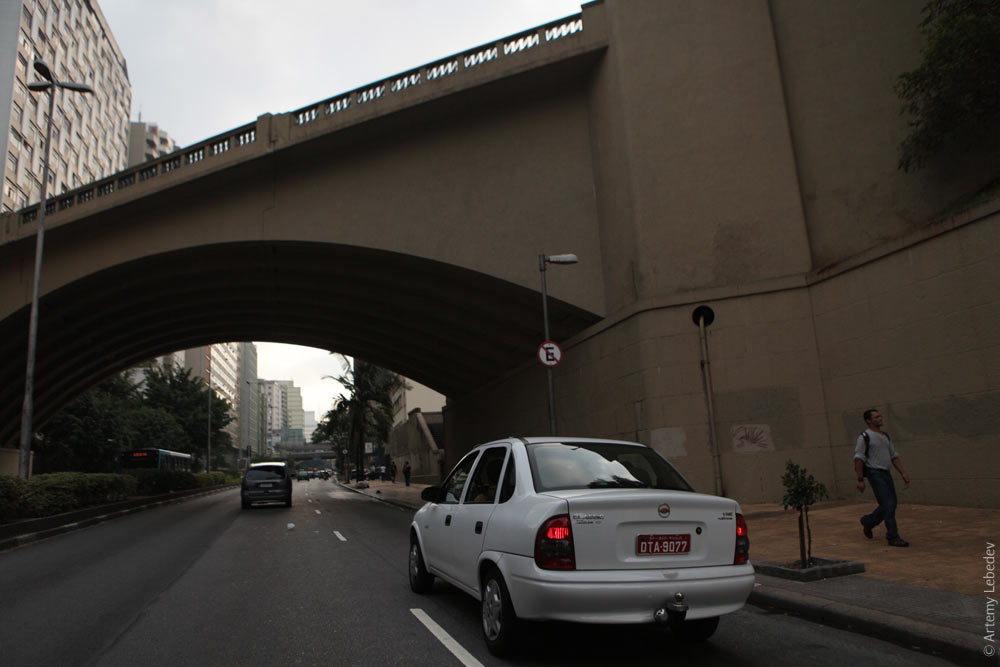 All buildings under construction are covered with netting, even if they’re 25 stories tall. 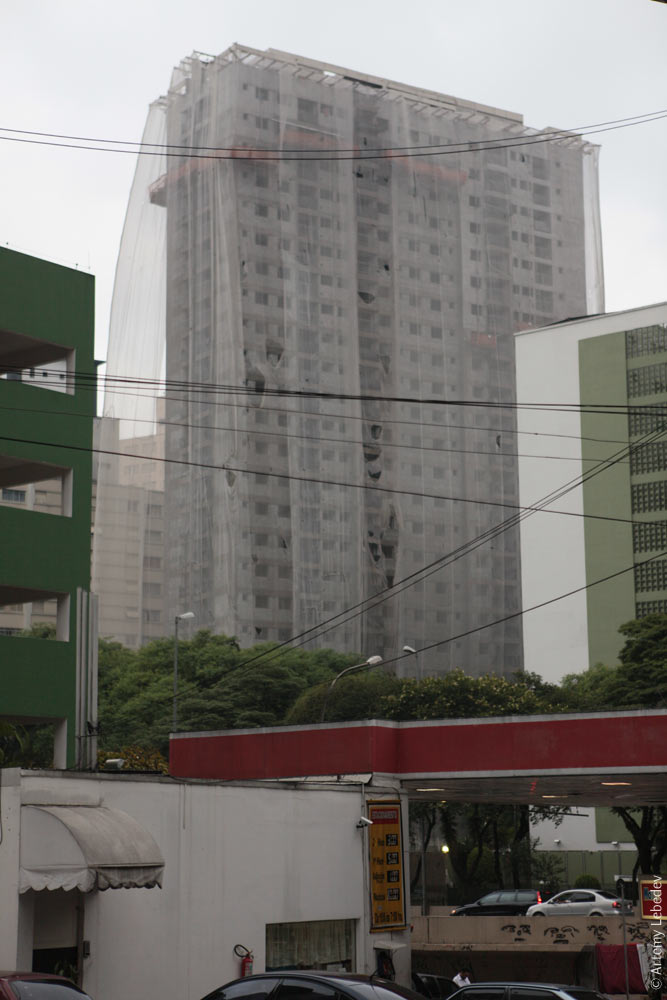 A huge number of Eiffel Tower-like radio masts are positioned on the roofs of high-rise buildings. 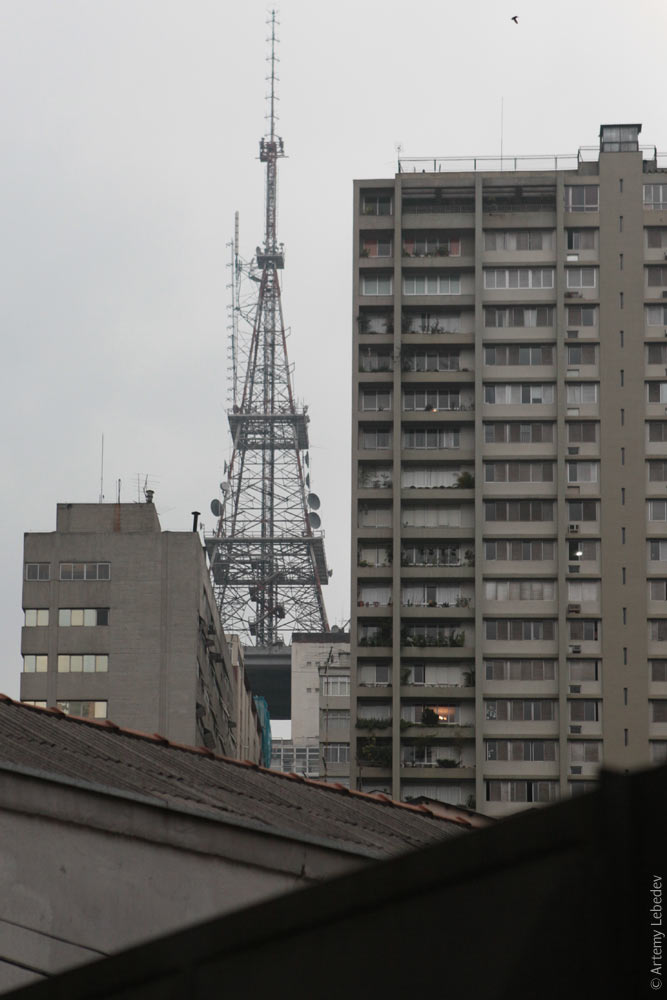 Bus stops are designed to accommodate at least two buses in length. 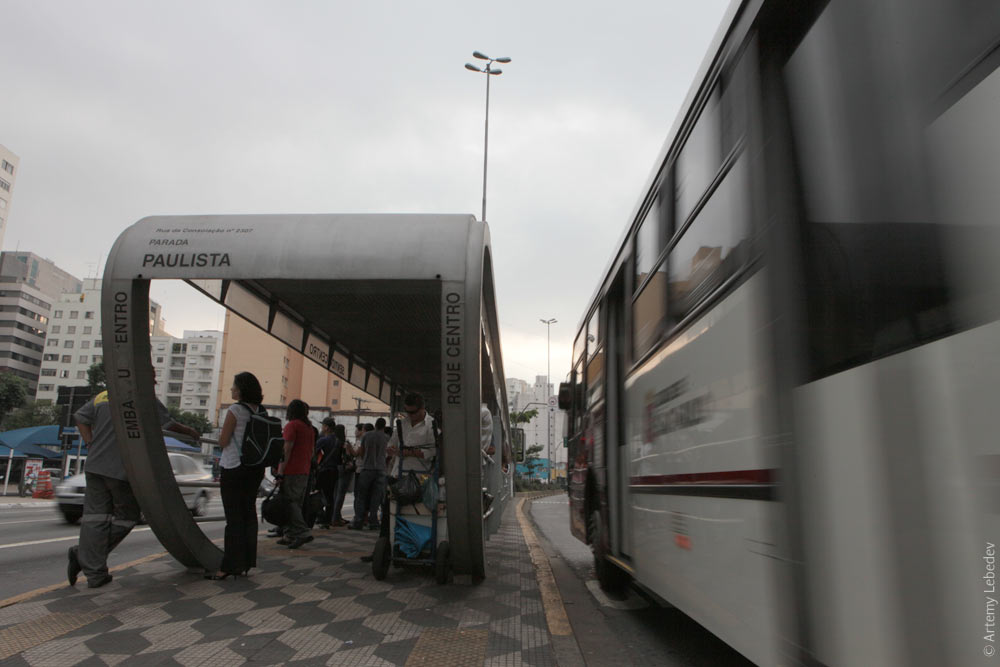 Whereas in Buenos Aires I simply struggled to understand how people can make heads or tails of the traffic signs, here I had to test out my reasoning behind the wheel. I report back: it’s confusing as hell. Can’t go straight, only left.  Every garage exit is outfitted with flashing red and yellow lights. They flash non-stop, all the time.  Brazilian phone booths are fairly low, so you’ve got to watch your head. There are also booths for children and the disabled, which are placed at an even lower height. 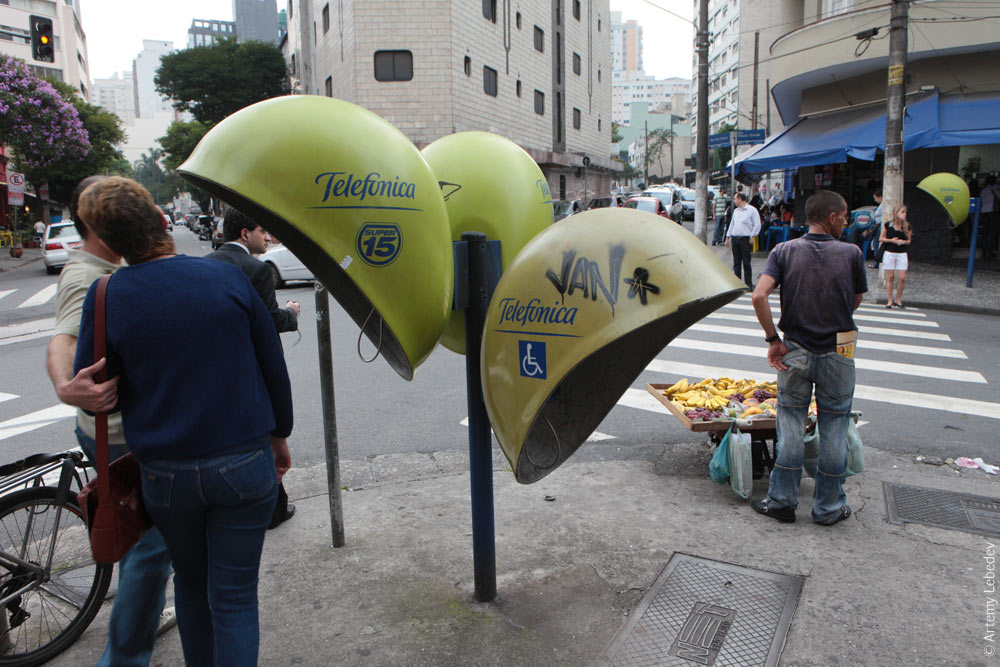 Street drainage ditches consist of neat canals hollowed out in the asphalt, reminding me of Freiburg. 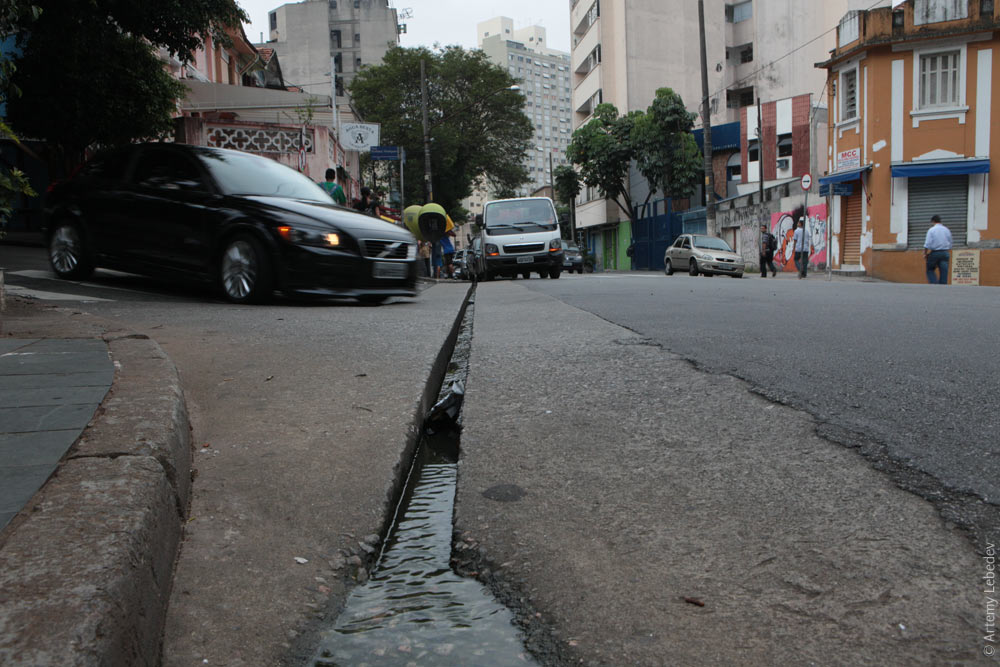 Taxi drivers here are accustomed to waiting for clients at specially equipped taxi stands. The stands resemble bus stops with a built-in TV—to make the wait less boring. The TV is located inside a metal box which locks to prevent theft. 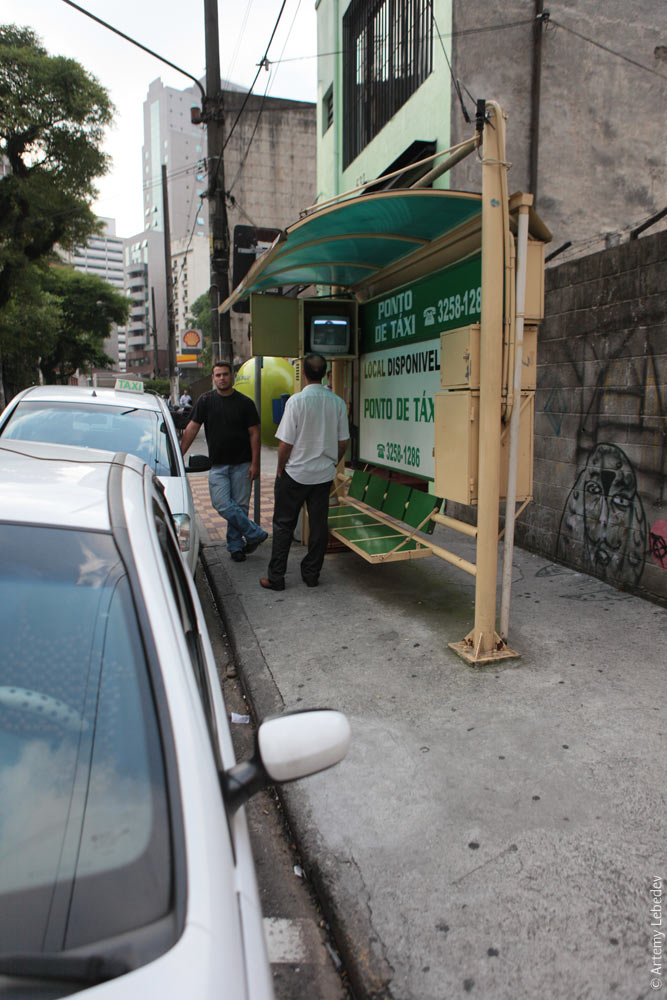 São Paulo’s pedestrian crossings are illuminated with additional mini-floodlights (they resemble stage lights and have “cet” written on them). 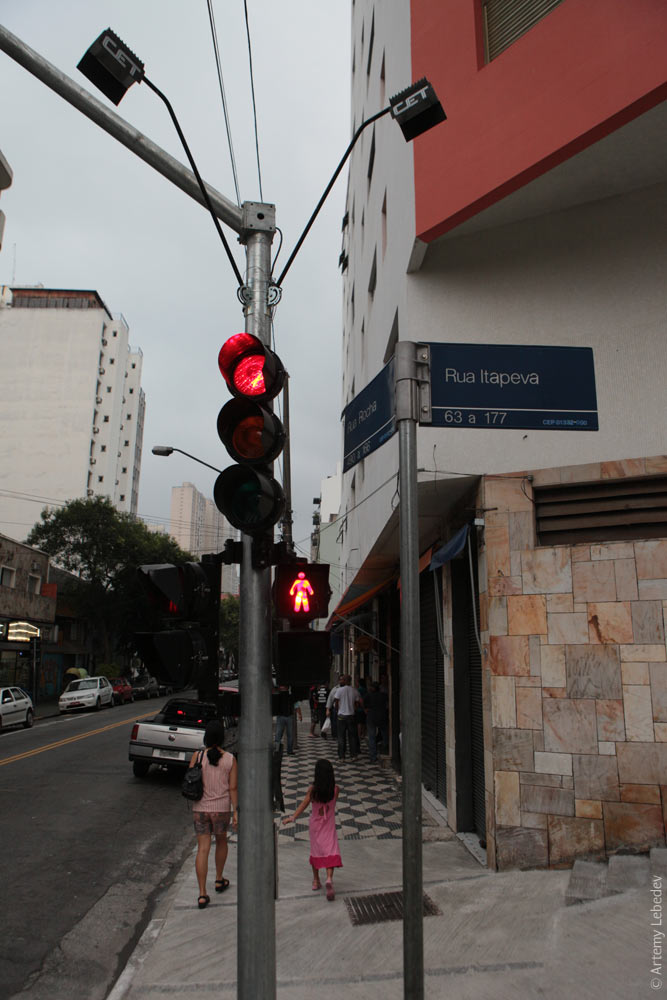 There’s so much garbage here that the baskets used to hold it are propped up by two sticks instead of one. 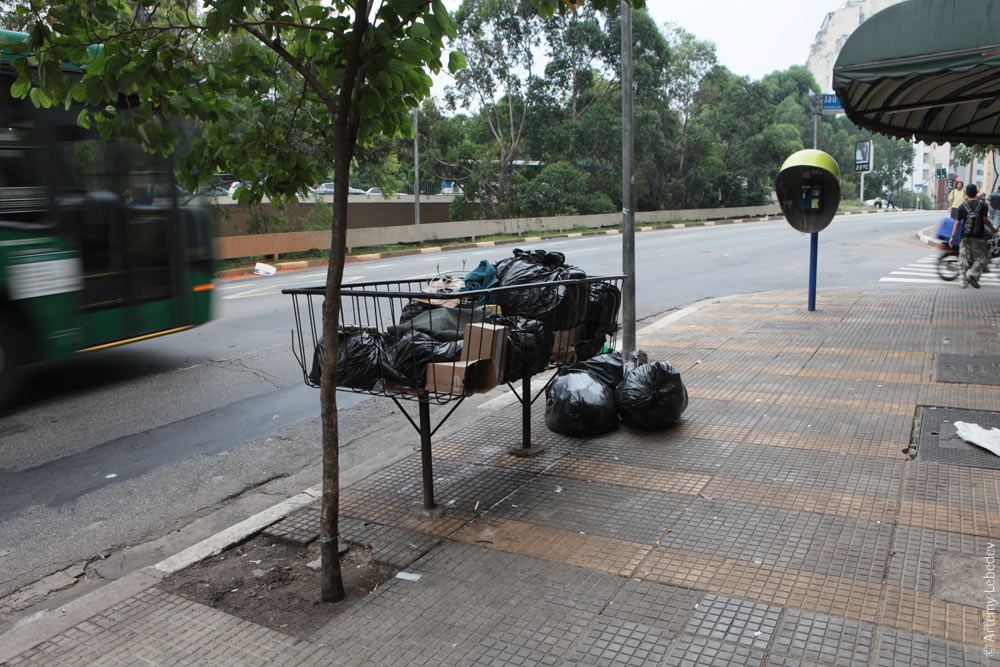 The great thing about Brazil is the total understanding of a person’s need for fresh-squeezed juices. There isn’t a single place where fresh-squeezed juice isn’t available. It’s consumed everywhere. So is beer.  They also make really amazing corn here. By the way, Brazilians don’t understand any English whatsoever, so I mostly had to communicate with the help of gestures, pictures and an online Portuguese translation tool. I kept showing the vendor one finger (“one, please”), and he’d respond with the sign of the horns (“there’s two in a serving”). Only at the end did we finally understand one another. He fished two corn ears out of the pot and used a knife to shave the kernels into a disposable bowl, miraculously avoiding damaging them in the process. Then he added some salt, a pat of butter, and handed me a fork. All this cost about a dollar. 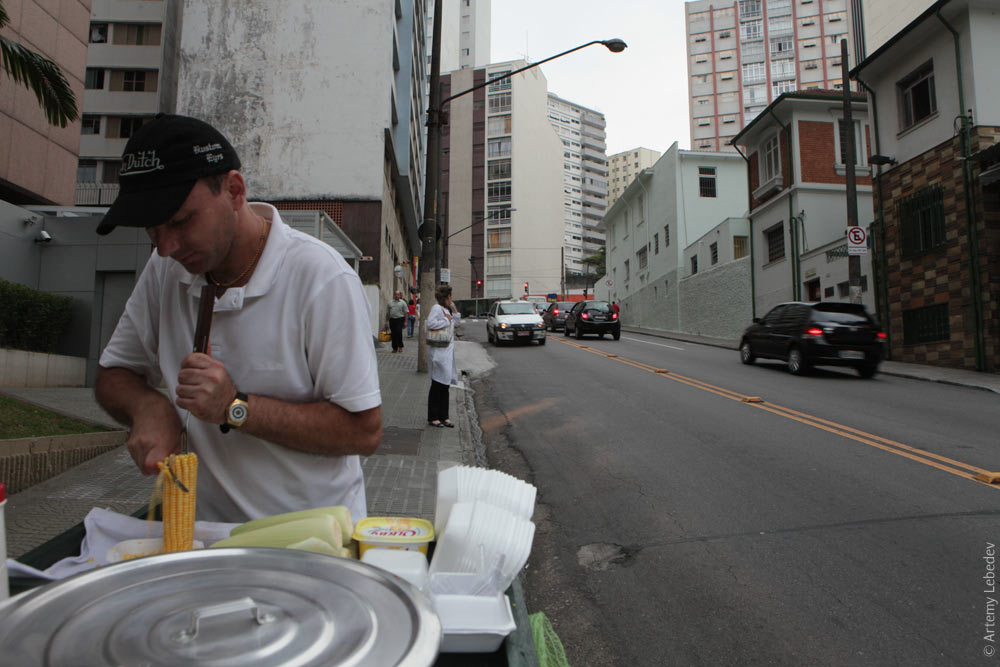 One of the most surprising cultural phenomena in Brazil is the graffiti artists’ handwriting. 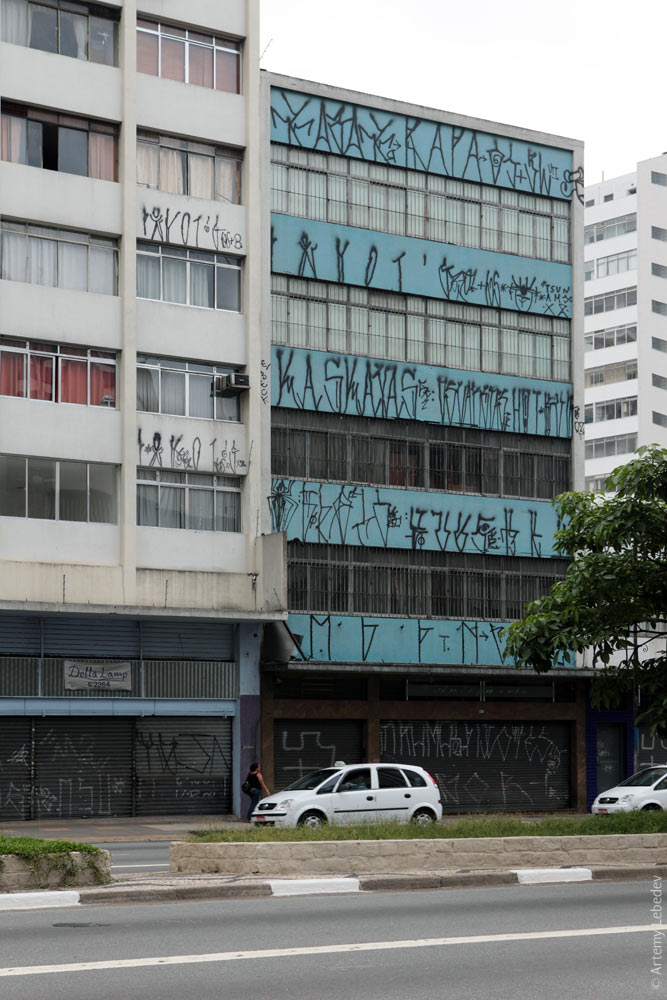 The first sign of an abandoned building or even an entrance left unlocked is graffiti on the walls. 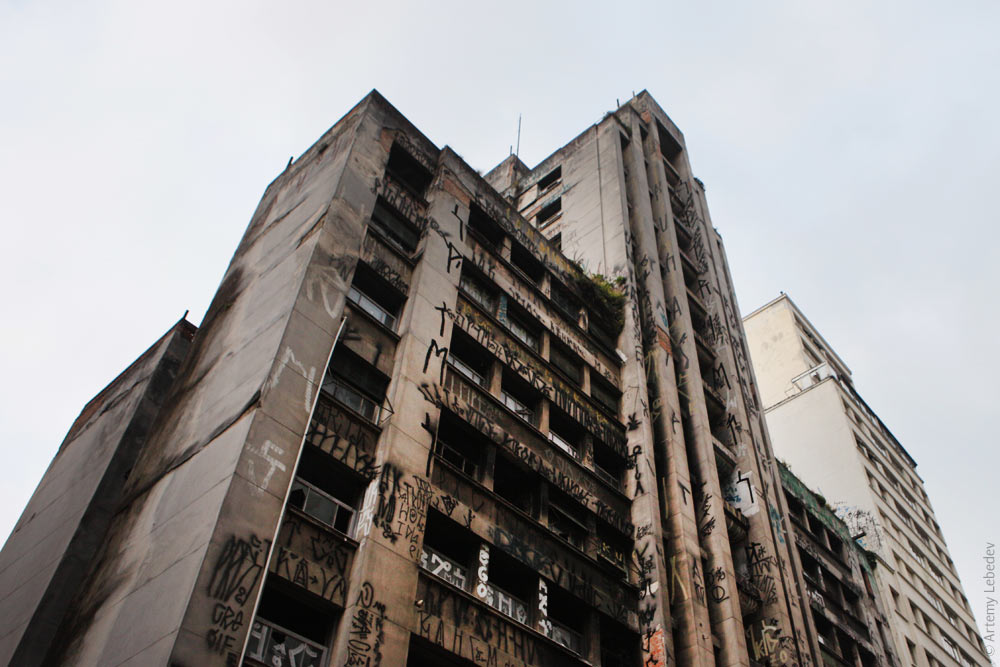 If it’s possible to squeeze a hand with a can of spray paint through the bars, a hand will squeeze through and write something. The writing looks more like runes than like Latin script. 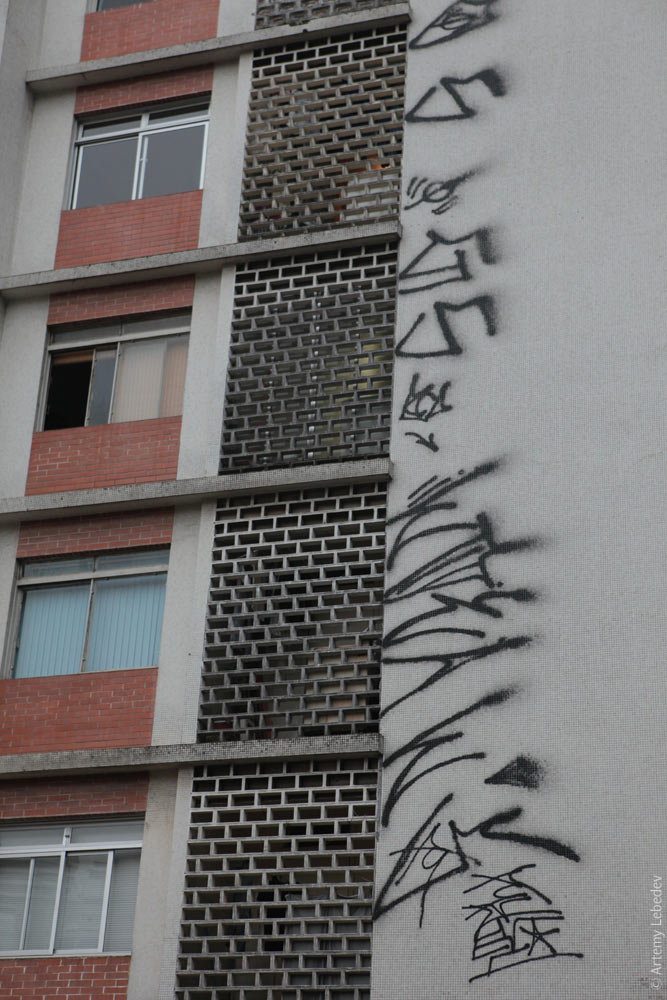 If it’s possible to squeeze through a dormer window, someone will inevitably squeeze through and leave a tag on the wall. 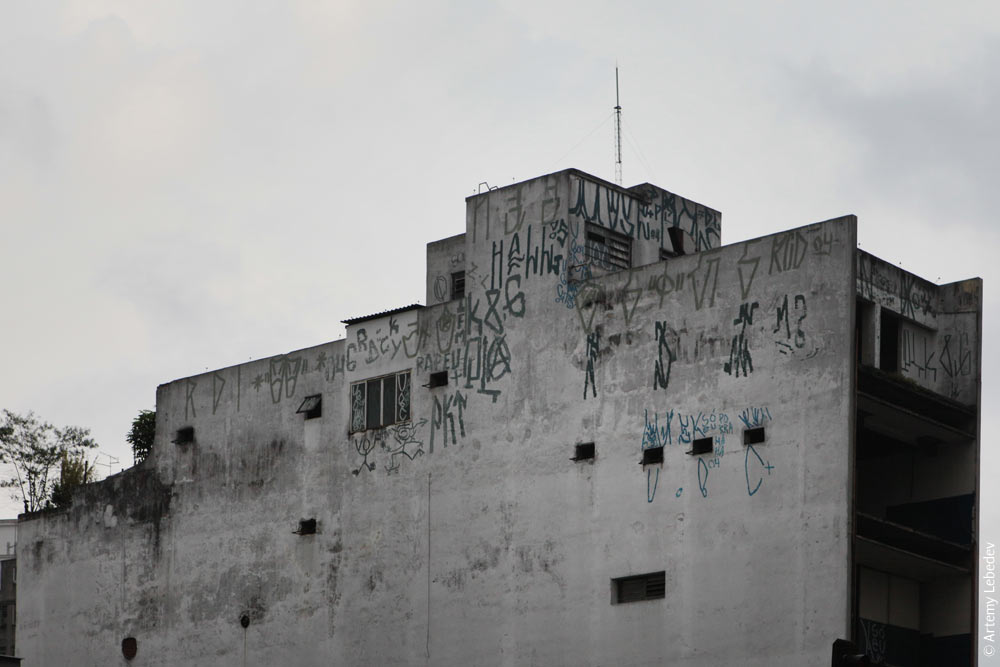 From here, I made my way south. The speed cameras on Brazilian highways are very aesthetically pleasing. You don’t even notice them at first. 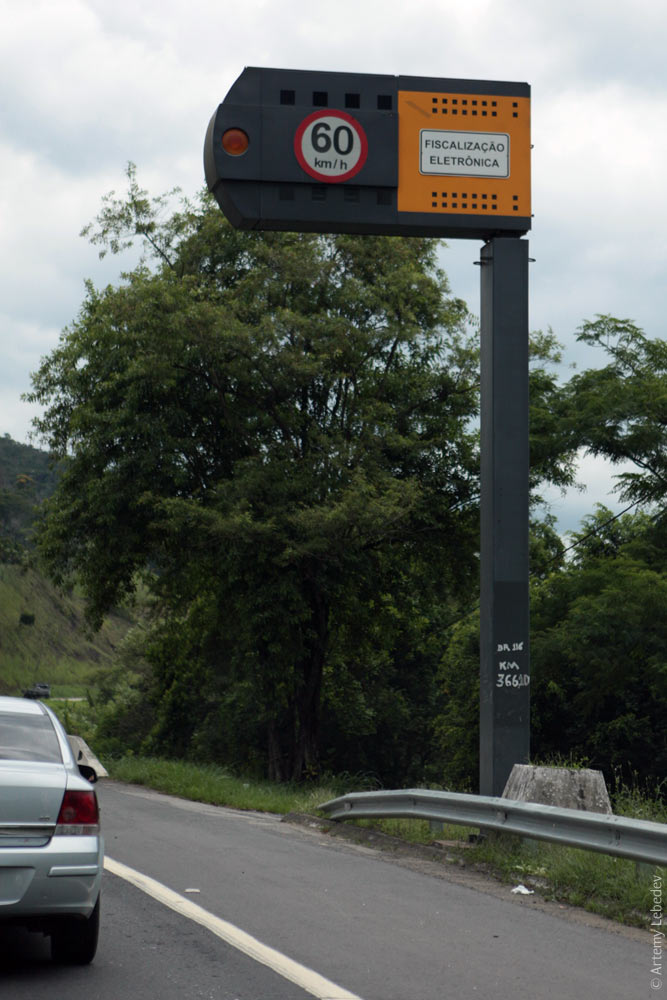 |